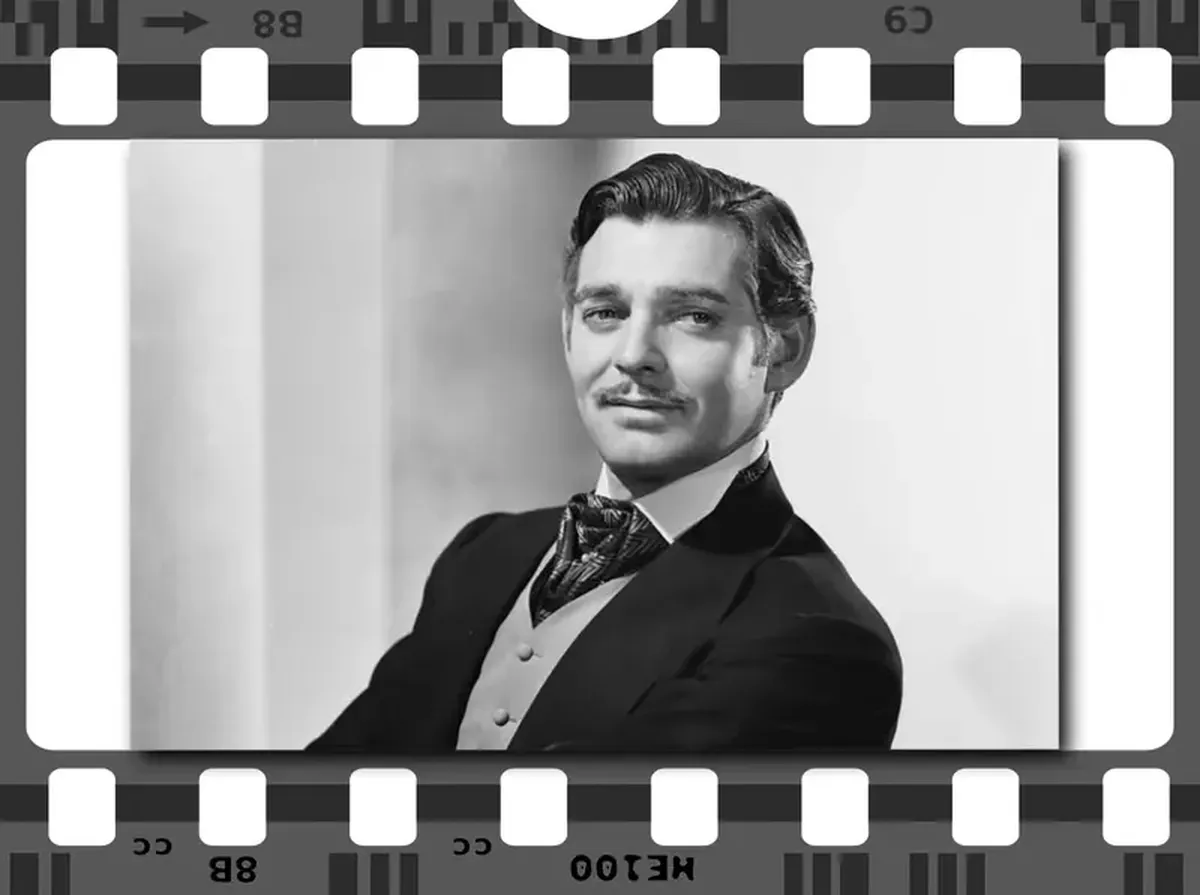
Beloved by women and respected by men, he gifted his Oscar to a friend’s son, healed from the loss of love through war, never gave autographs, avoided “societal servitude,” and couldn’t hold a grudge. He was married five times, became a father to other people’s children, and never got to see his own son, passing away in the same hospital where his heir was born four months later.
In the Spotlight
Millions of women’s hearts were shattered by the rugged hero of Margaret Mitchell’s cult bestseller “Gone with the Wind.” It seemed that the portrait of Rhett Butler was painted with Clark Gable in mind—the creator of one of the most iconic characters in world cinema in the film adaptation of the famous novel. For this professional achievement, the legendary actor was nominated for an Oscar, but he won it for a different film where he was “just being himself,” while he considered his best role to be the one that cost him his life. “The King of Hollywood was the most masculine man I knew, yet he remained a little boy at heart, and it was this combination that attracted women to him,” described one actress who knew the star well during the 1930s and 50s.
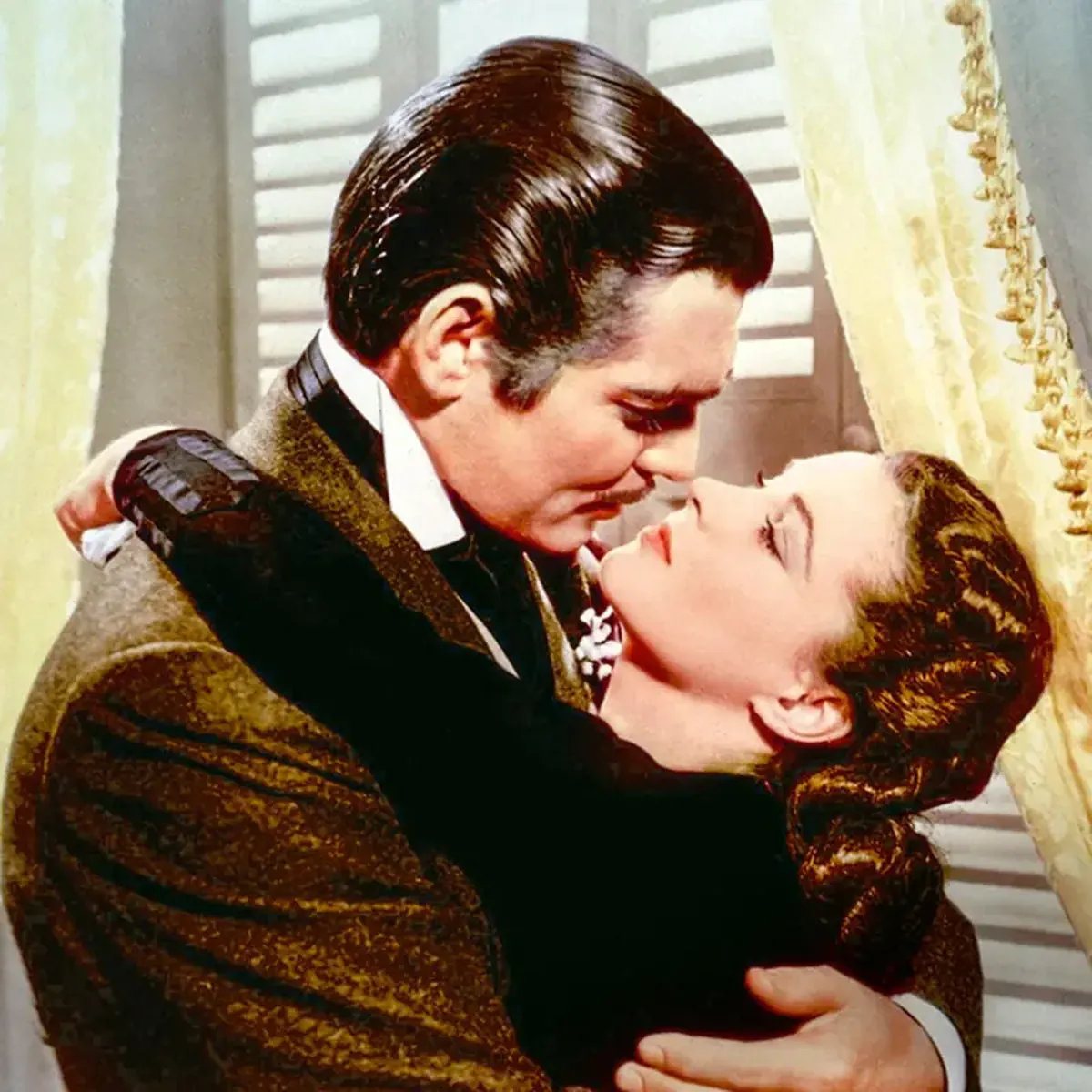
His dominance on screen as a “brazenly masculine” romantic hero, as one critic put it, was in stark contrast to his recent existence as a faceless extra, ignored by directors and actors alike. Few would have dared to imagine the awkward, lanky young man, poorly coordinating his 185 centimeters, in the brilliant future that awaited him under the spotlight. But facts are stubborn: Clark Gable’s filmography would eventually include over 60 works, and he would count even presidents among his acquaintances. Who transformed a former oil worker, farmer, and tie salesman into a screen idol, and what personal qualities allowed him to play only leading roles for 30 out of his 37-year career?
A Jack of All Trades
The only child of an oil well driller from Ohio, William Clark Gable was born on February 1, 1901, in Cadiz. His ancestry included Germans, Belgians, and Pennsylvania Dutch. William Clark did not remember his mother, Adeline Hershelman; she passed away when he was less than ten months old. The boy was raised by his widowed father and stepmother, who instilled in him a love for Shakespeare and taught him to play the piano. He later mastered wind instruments as well: the 13-year-old was the only minor musician “blowing brass” in the city orchestra. His father also nurtured “manly” skills in his son, taking him hunting and teaching him the rough physical labor of drilling and farming.
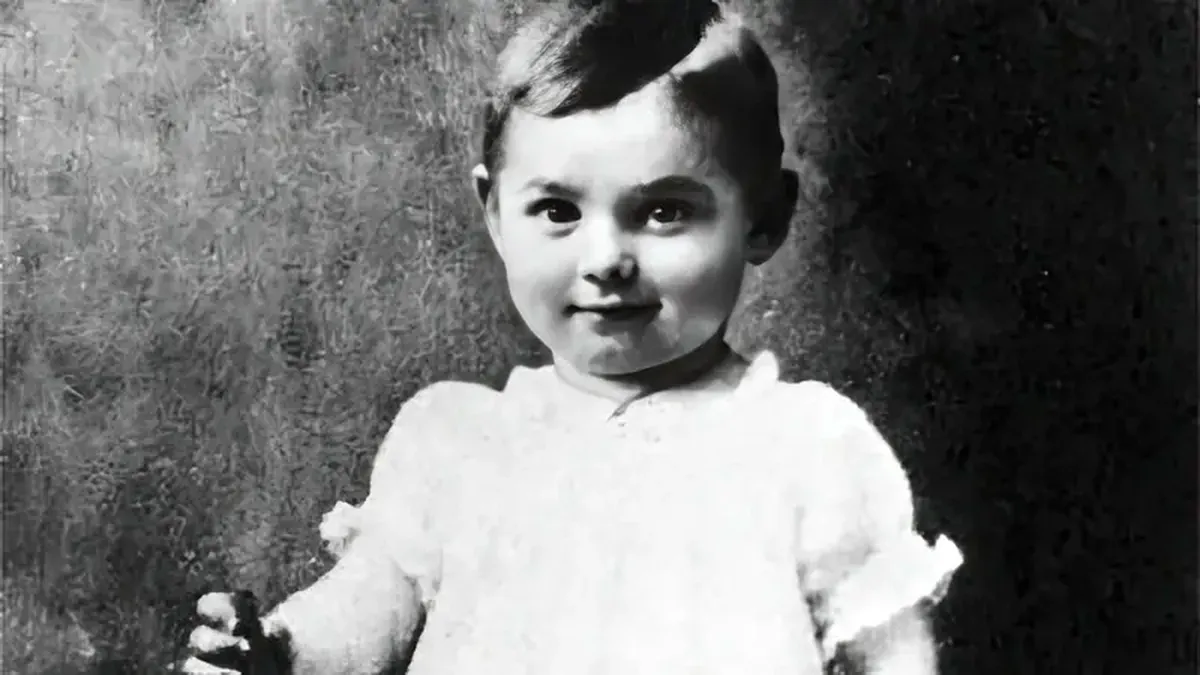
From childhood, Clark learned the mechanics of machines, becoming adept at fixing, building, and painting everything. He chopped wood, cared for horses, grew alfalfa, and disassembled and reassembled engines, eventually repairing his own cars and any other machinery—from household appliances to military aircraft. The actor explained his habit of managing without mechanics by saying that a film career could end at any time, but a car should run regardless of box office receipts. Guests at the Gable farm often found it normal to see the athletic man in a kitchen apron, canning the fruits of his garden.
No Such Thing as Coincidence
William Clark’s father had intended to earn a living through farming: facing financial difficulties in 1917, William Henry moved the family to Palmyra. But three years later, after becoming a widower again, Gable Sr. returned to the oil business, taking his son to Oklahoma. For a time, the future actor worked alongside his father, cleaning oil wells in Tulsa, and at 21, he received $300 in inheritance from his maternal relatives and set off to find his place in the Pacific Northwest. He dreamed of trying something interesting, and that new endeavor turned out to be working in traveling shows. However, those were just as random as his temporary jobs on the docks.
Traveling further across the country, William Clark found work as a tie salesman in Portland. By some symbolic twist of fate, he met a theatrical actor in an Oregon department store, who turned out to be the nephew of one of the future actresses from “Gone with the Wind.” This new friend introduced Gable to a member of his acting troupe. The new couple began performing together, but soon the troupe went bankrupt, and Gable had to look for work again. During the day, he worked for a telephone company, while in the evenings, he studied dramatic arts. His acting coach became the fairy godmother who shaped her student’s starry fate, guiding him along the artistic path.
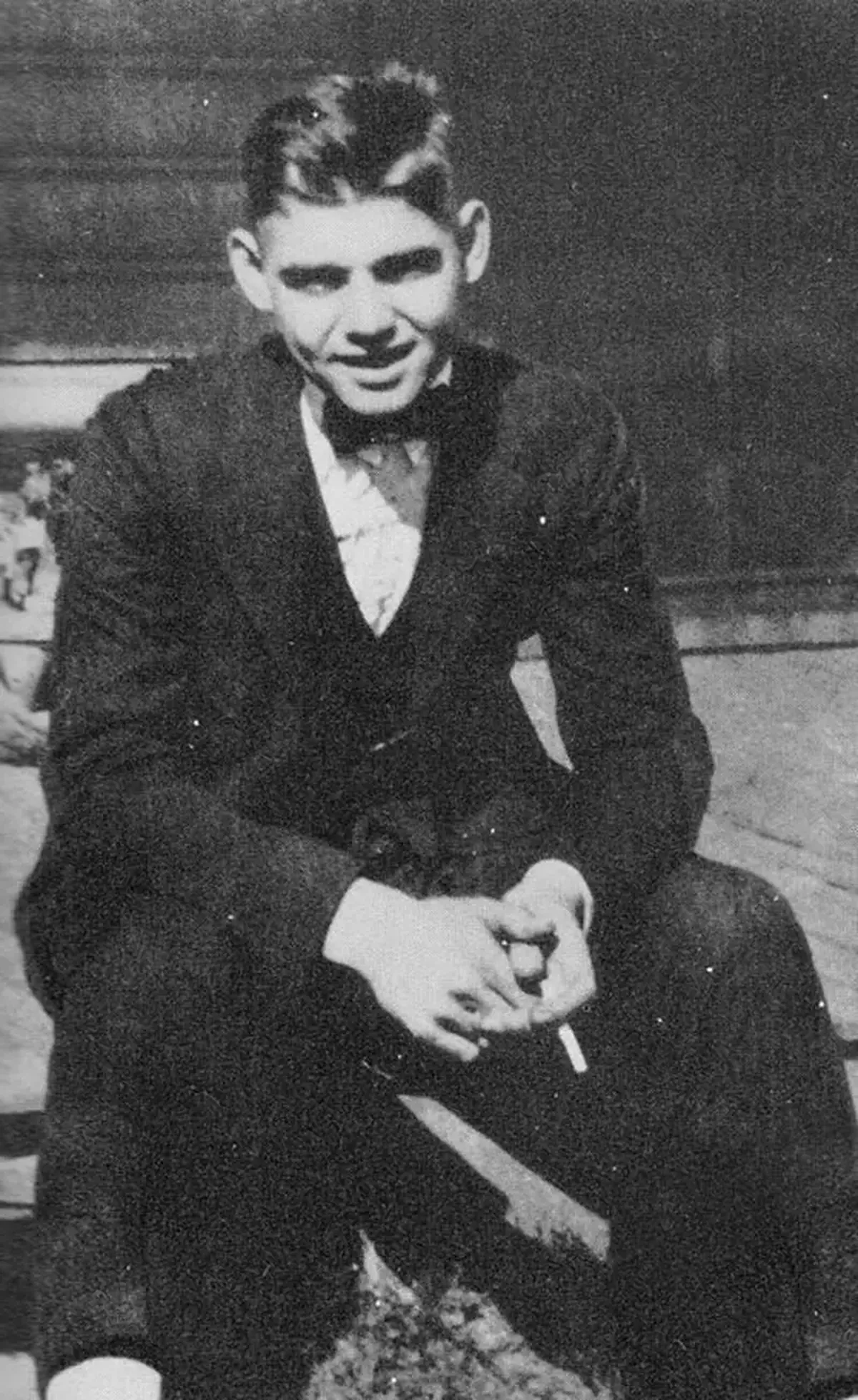
Gable’s Muse
At the time of meeting 22-year-old William Clark, Josephine Dillon was nearly 40. A modest and intelligent woman, she had studied at Stanford. Three sisters in her family dedicated their lives to the arts: one was a composer, another an opera singer, and Josephine became an actress. Once, she had performed on Broadway, and later became a theatrical manager, dedicated to discovering young talents. “I saw a quiet, deep, and insightful young man, ready to face challenges alone, without involving anyone else,” the mentor recalled her first impressions of her new student, to whom she gradually grew attached and developed tender feelings.
Josephine noticed that their passionate conversations in studios and cafes were always about the future and never about the past. The mentor sculpted the future star with the inspiration of an artist creating her best work. Josephine not only taught her student the basics of acting but also worked on his image: at her own expense, she fixed Clark’s imperfect teeth, ensured he had a good hairstyle, trained his “manly” voice, instilled good manners, and taught him to walk again, helping him balance his movements and maintain good posture. She even changed her student’s awkward first name, Willie, to the respectable second name—Clark. After these necessary transformations, her creation was ready to embark on a cinematic career.
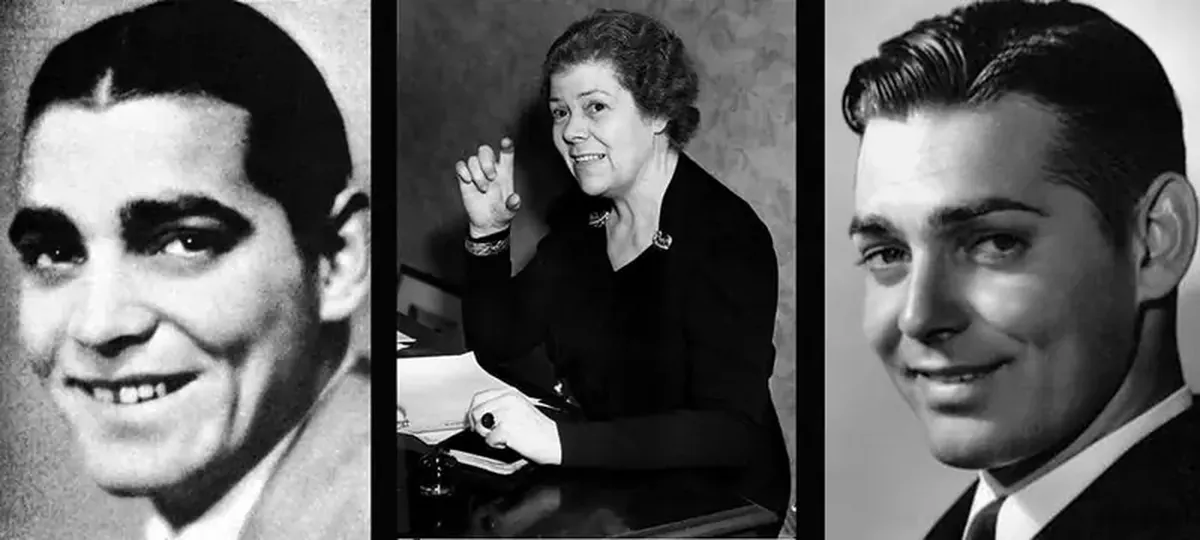
Clark Gable and Josephine
“I Am Grateful to Her”
In 1924, Clark and Josephine, now married, moved to Hollywood. At first, they could only afford one movie ticket, which “first Mrs. Gable” would give to her husband. Starting with roles in crowd scenes in silent films alongside Clara Bow and Pola Negri, Clark failed to land significant roles in cinema for two years and returned to the theater, where he found the audience’s affection and the sympathy of the leading actress. After the theatrical star Jane Cole had spent time in Clark’s embrace, Hollywood’s femme fatale Pauline Frederick, whose popularity contributed to the first mention of Gable’s name in the press, also crossed paths with him.
Familiar with the artistic world, Josephine accepted the inevitable romances of her 17 years younger husband and did not demand fidelity from him. However, Gable eventually left her—one day he simply moved to another place. From then on, their connection was purely professional. They did not mention their shared past and did not explain the reasons for their divorce to anyone. Yet, it was clear: the man whose photo his first wife kept framed for the rest of her life no longer needed her support. “I am grateful to her,” was Clark’s succinct response to the press’s inquiries about “the first Mrs. Gable.” That was all the sex symbol of Golden Hollywood felt was necessary to say about his mentor.
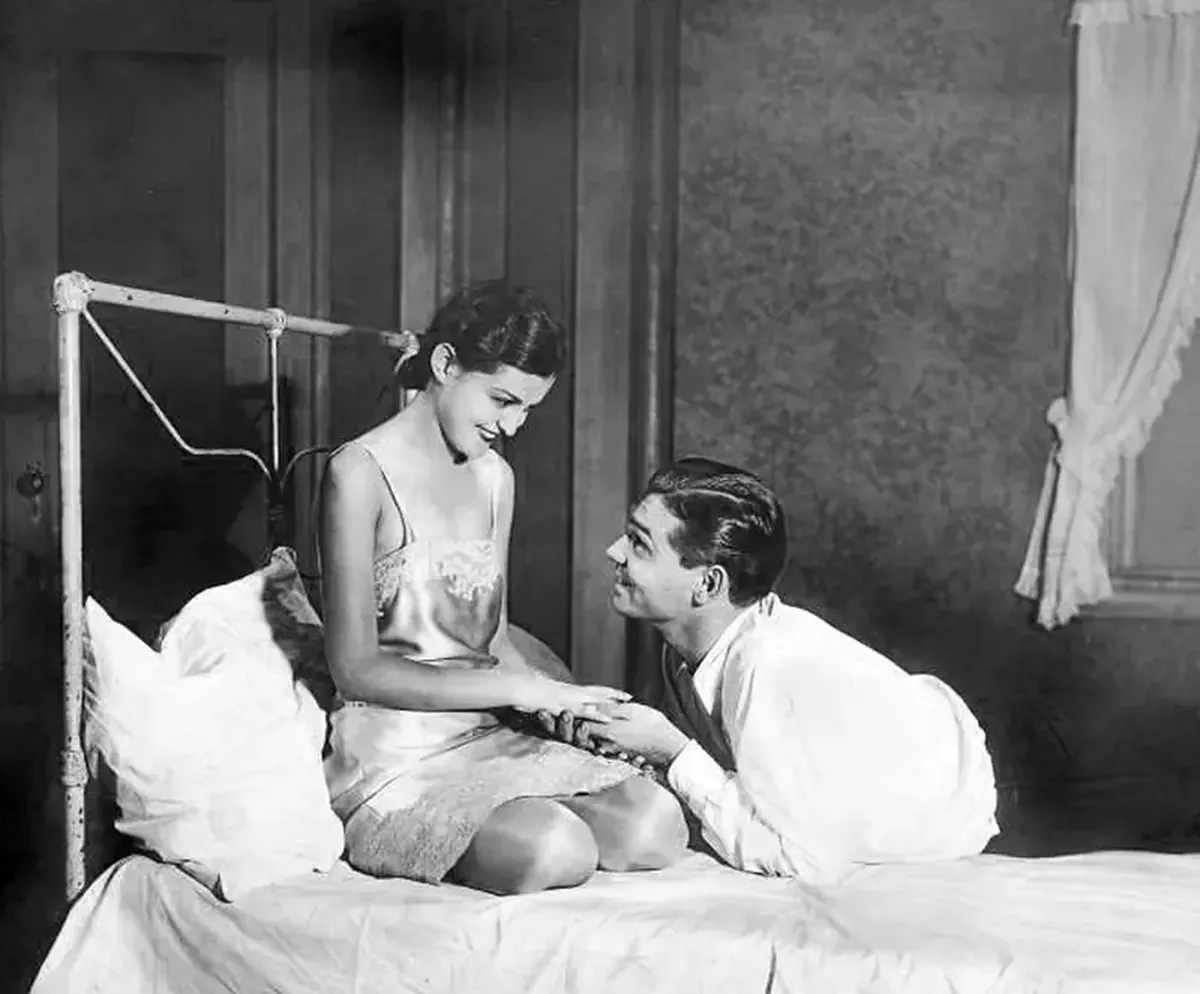
In the play Machinal (1928) with Zita Johann
“A Lumberjack in Evening Attire”
A few days after his official divorce in 1930, Gable married Texas socialite Ria (her full name was Maria Franklin Prentice Lucas Langham). The second marriage was formalized twice due to different state laws: the second ceremony took place a year later after the couple moved to California. By that time, Gable had worked on the stages of Houston and New York, and after successful theatrical seasons, Pathé Studios offered the actor his first role in sound film: in the low-budget western “The Painted Valley” in 1931, he played the villain. His role in the Warner Bros film “The Night Nurse” was of a similar nature.
The studio’s executive director remarked that “Clark Gable has big ears and looks like a monkey.” But this was one of those cases where the inner essence of a personality can be more important than appearance, even in film. The actor met the necessary requirements when Hollywood was struggling with a shortage of male stars. MGM’s publicity manager Howard Strickling described Clark Gable’s studio image with the colorful phrase “a lumberjack in evening attire.” MGM’s strategy for promoting new actors involved pairing men with well-known actresses. In eight films, Clark Gable starred alongside Joan Crawford, in seven with Myrna Loy, in six with Jean Harlow, in four with Lana Turner, and in three with Norma Shearer and Ava Gardner.
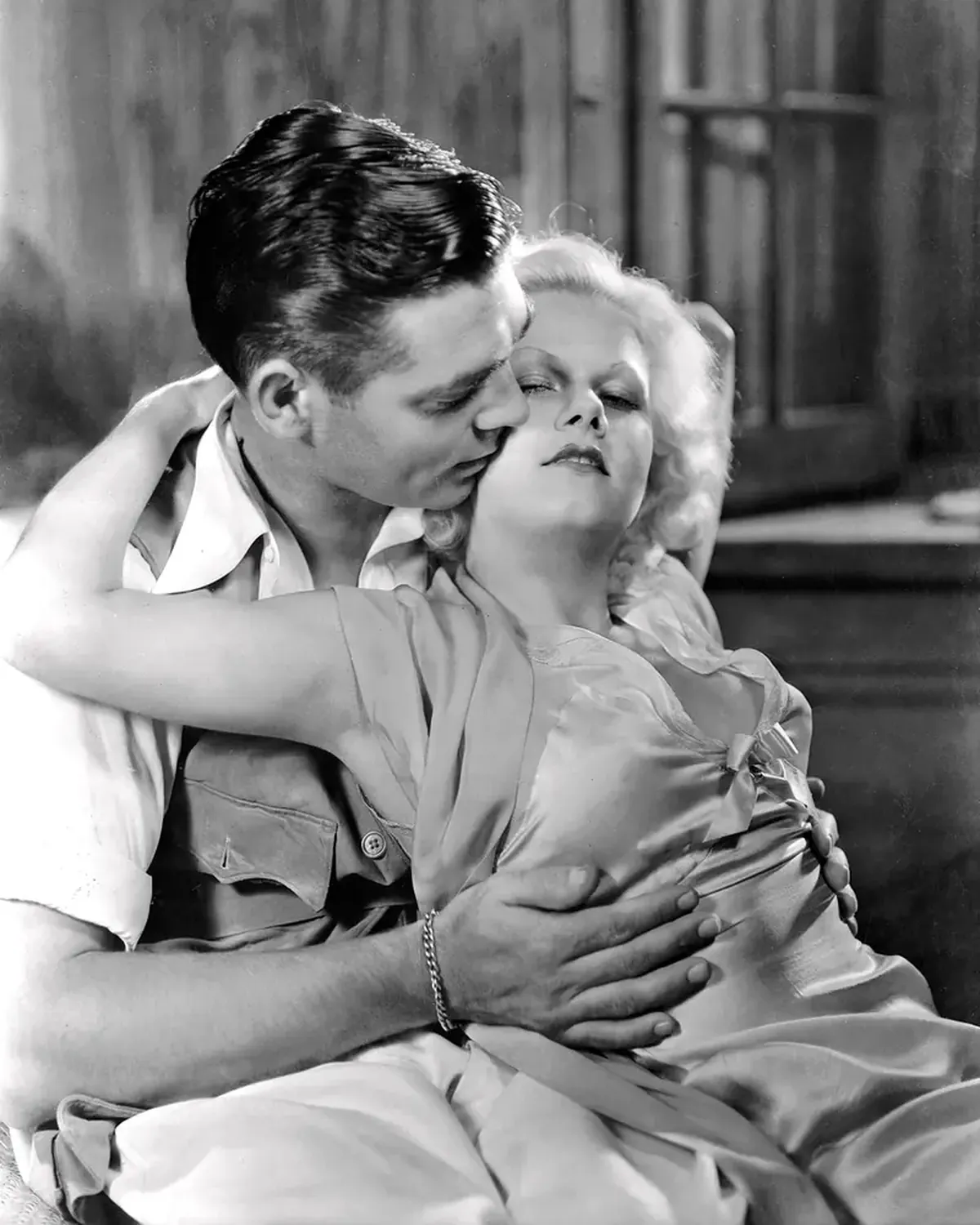
Gable with Jean Harlow in “Red Dust” (1932)
A Star Rises
Gable’s first leading role alongside Joan Crawford in the 1931 film “Dance, Fools, Dance” prompted studio head Louis B. Mayer to cast this harmonious pair in seven more films (many considered Gable to be Crawford’s “natural” screen partner) and to replace another actor with Clark in already filmed material. “A star has risen that will outshine all others,” critics wrote after the release of the 1931 film “A Free Soul,” where Gable so masterfully played a gangster that it became clear to producers that from then on, they would invite this actor only for leading roles.
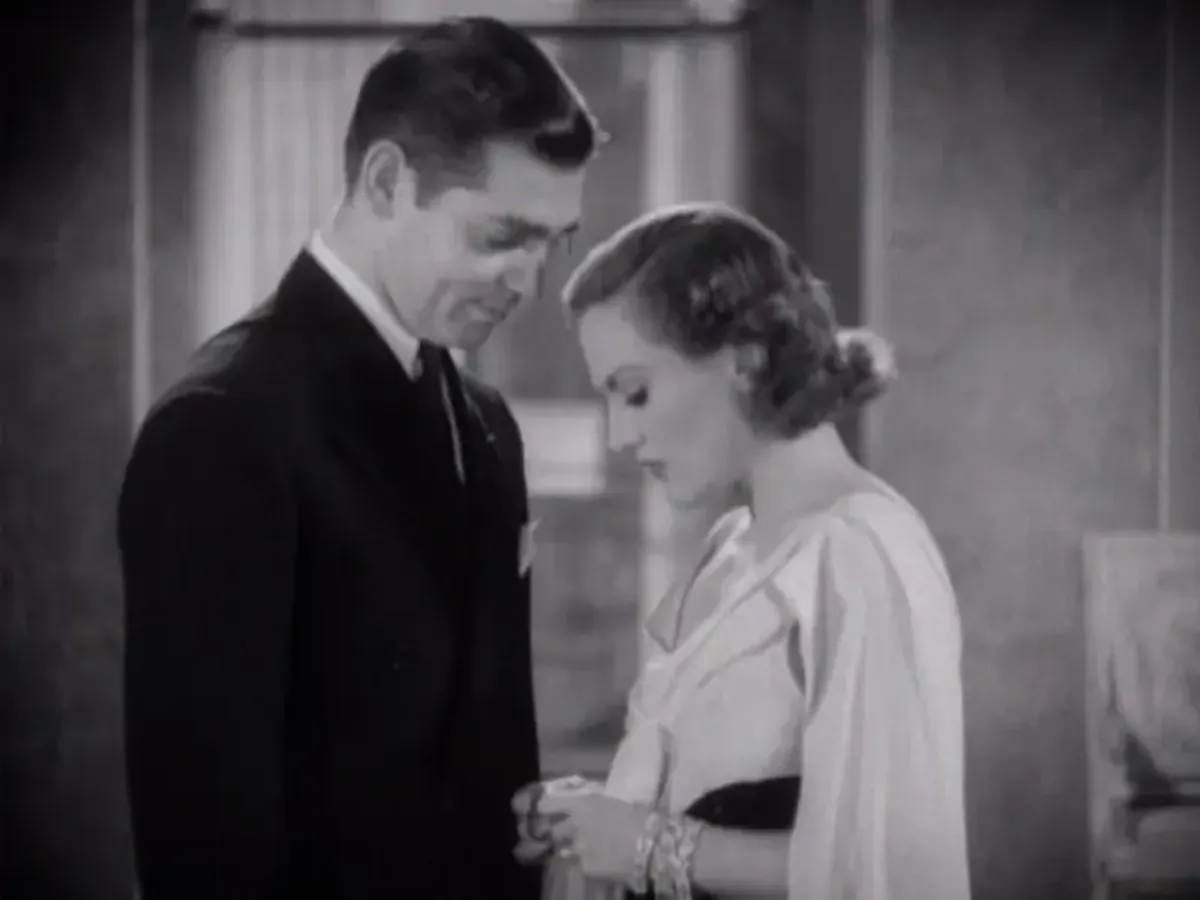
Clark Gable with Joan Crawford
In 1931, films “Susan Lenox,” where Clark starred with Greta Garbo, and “Possessed,” where the charismatic actor’s partner was Joan Crawford, were released, igniting a romance between them (critics referred to their relationship as “an affair that nearly scorched Hollywood”). Gable then shifted his attention to his co-star from “Polly of the Circus,” Marion Davies. In the same year, the film “Strange Interlude” with Norma Shearer was released, where Gable again played the main romantic role. His next work in the melodrama “Red Dust” made the actress Jean Harlow’s partner the biggest male star at Metro-Goldwyn-Mayer.
Essence and Image
The romantic comedy “It Happened One Night” in 1934 earned the actor an Oscar for Best Actor (his screen partner Claudette Colbert also received the same award for Best Actress, and the film directed by Frank Capra won five Oscars in total). It is known that Gable’s role as a newspaper reporter boosted sales of men’s undershirts: the image of a man who didn’t wear underwear under his shirt looked too striking. At the same time, the “quirky and good-natured” character portrayed by the actor did not convey the “standard set” of a sex symbol and resembled the “real Gable.”
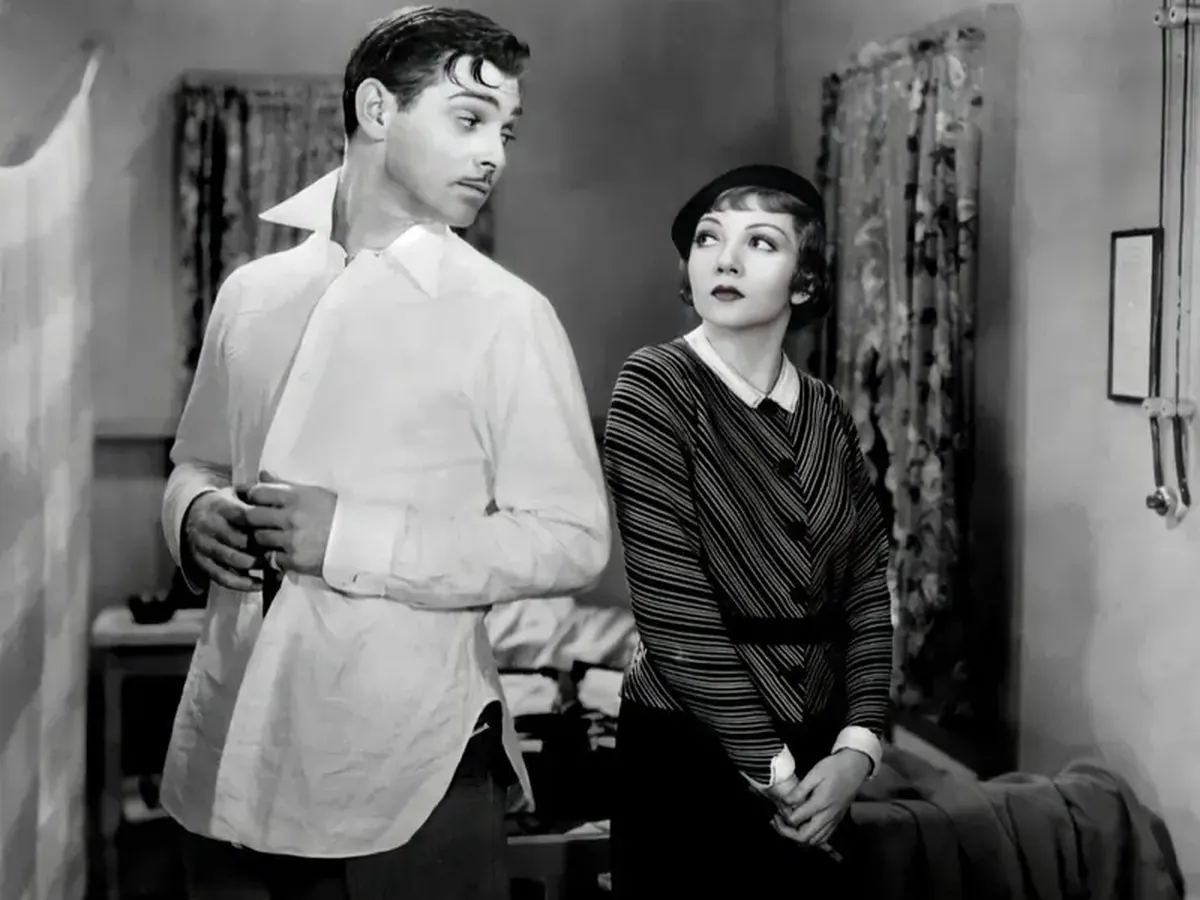
A scene from the film “It Happened One Night”
According to everyone who knew the actor well, in real life, his personality had little in common with the romantic heroes he played on screen. Clark was devoid of “pomp” and could get along equally well with both ordinary people and high-ranking officials. However, at the “dream factory,” he was no longer given the opportunity to be “himself” on screen. If in 1934 there was no project that matched Gable’s established image, the studio paid him $2,000 a week under contract without requiring him to do anything. When the forced leave stretched on, MGM management rented out their star. Once, Louis Mayer “shared” him for $2,500 with Columbia Pictures, earning $500 a week in profit from the “rental” of the star.
Gave Away His Oscar
Clark Gable was the most commercially successful actor in pre-war Hollywood. From 1934 to 1942, when the superstar’s film career was interrupted by World War II, his name consistently topped the box office charts. The actor’s stable popularity compensated the studio for all expenses. Films like “Manhattan Melodrama” (1934), “San Francisco” (1936), “Saratoga” (1937), “Test Pilot” (1938), and “The Misfits” (1940) were successful with both audiences and critics. Gable’s “dense” filmography did not exclude the creation of masterpieces. During this period, he was nominated for the highest award of American filmmakers twice more: for his role as Fletcher Christian in the 1935 film “Mutiny on the Bounty” and for his role as Rhett Butler in the 1939 film “Gone with the Wind.”
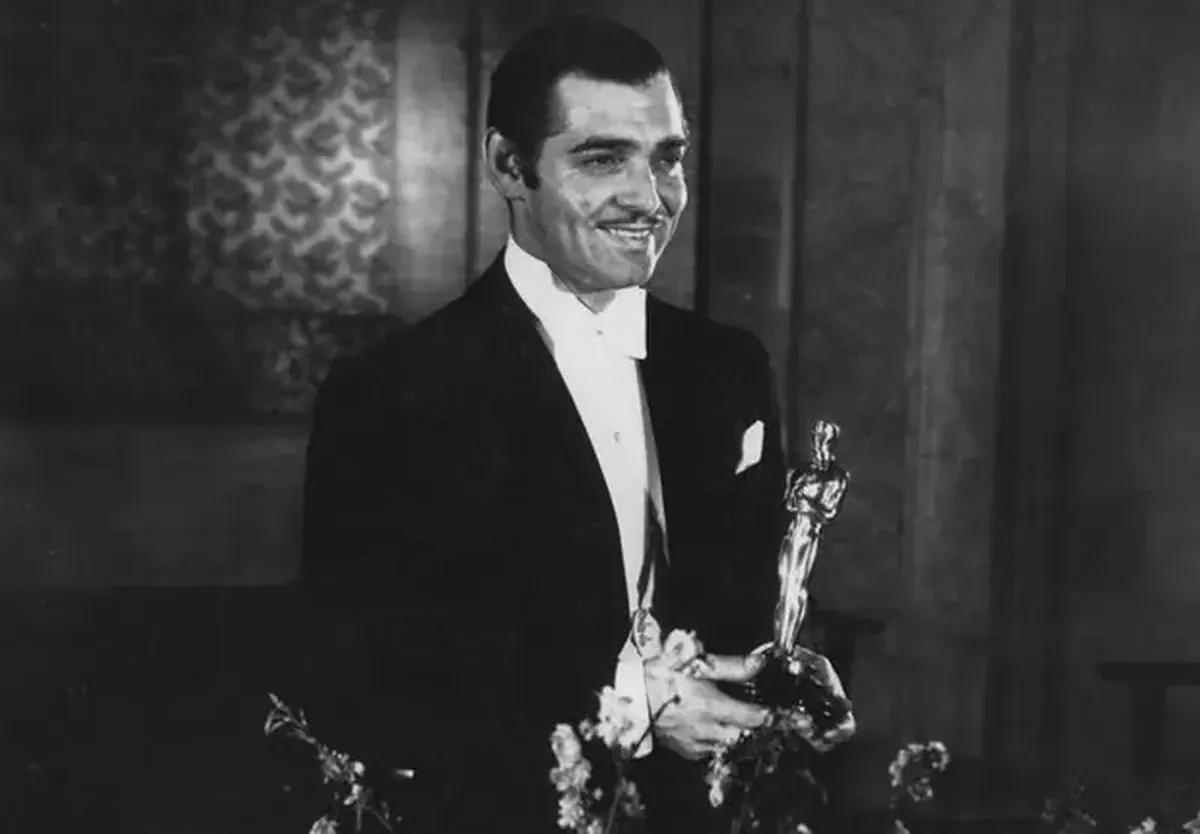
After receiving an advance for his work in the film adaptation of the novel, to which even the author of “The Great Gatsby,” F. Scott Fitzgerald, contributed, Gable finalized his divorce from socialite Ria Langham, as he had long since stopped living with her. This marriage contributed to the star’s fatigue with “societal servitude”: Gable had enough of cameras and lenses both at the studio and in public, and he saw no point in wasting his life on meaningless public appearances where interested parties gathered to forge necessary connections. At this new stage, it was more important for Clark to conserve his energy for work, from which he derived the greatest satisfaction. He did not boast about his past achievements or indulge in excessive pride. When a friend’s son expressed interest in his Oscar, the actor handed the coveted statuette to the delighted boy: “Here, this is a gift from me to you!”
Doubts and Principles
Interestingly, Gable did not want to play Rhett Butler, a role that audiences had envisioned for him from the very beginning. Even before the casting announcement, bags of letters from fans requesting that their idol be cast as the heroic figure arrived at the studio. And it was these expectations that instilled doubts in Clark: he feared falling into the trap of preconceived notions. What if he didn’t meet expectations and couldn’t live up to the image crafted by Americans? After some thought, Gable decided to accept the responsible role, finding a way to handle potential failure. If there were criticism and complaints, he could always say, “You wanted this!” The actor had to deal with nerves from the first day of filming until the premiere.
The lead actor nearly derailed the shoot, planning to leave the set over the separate restrooms for “black” and “white” people. The next reason for his outrage was the studio’s plans to premiere in Atlanta without inviting the Black actress Hattie McDaniel, who played Mammy. She was Gable’s protégé: he had advocated for her casting in the role, which had attracted as many contenders as Scarlett O’Hara’s character (played by British actress Vivien Leigh)—even Eleanor Roosevelt had expressed a desire to “place” her own maid in the role of the enslaved mother. Only a request from McDaniel herself (who won an Oscar for her performance) not to boycott the premiere kept audiences from missing the chance to see Gable at the film’s presentation.
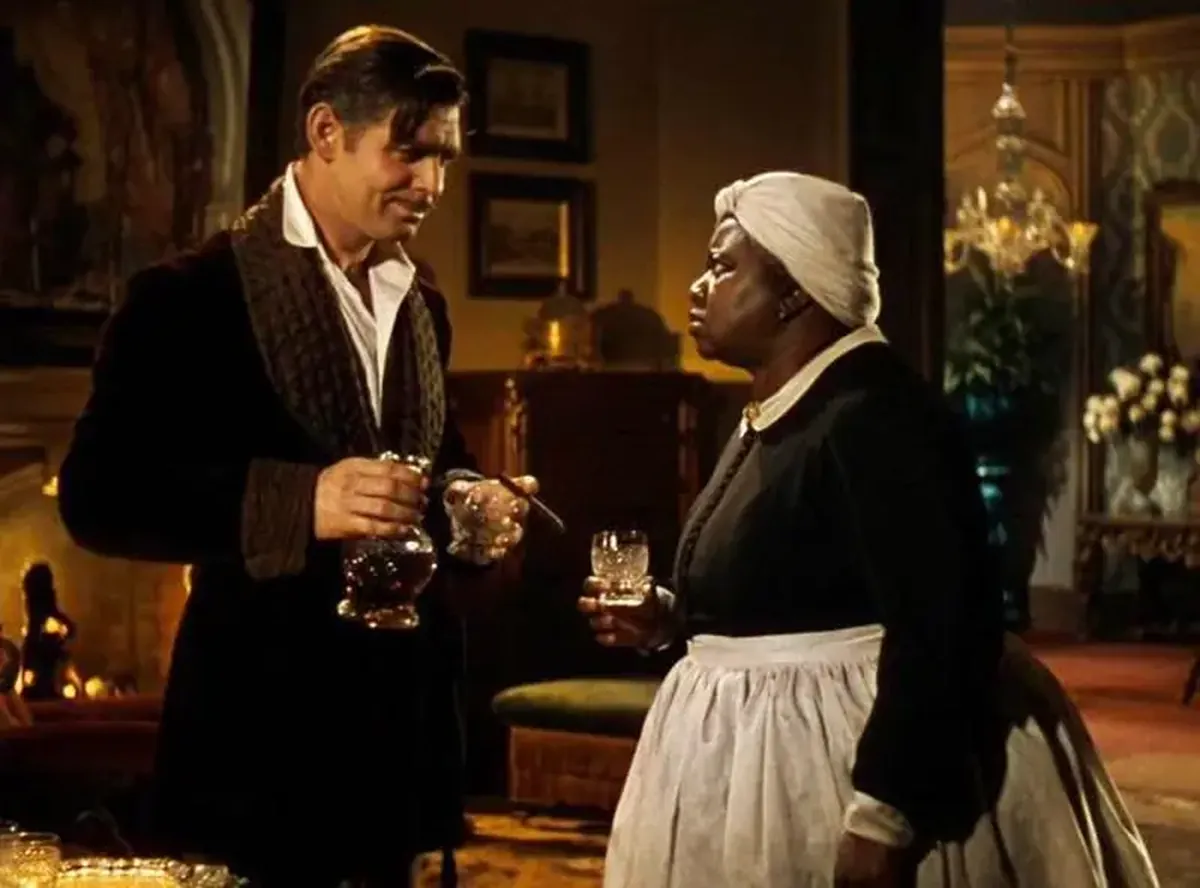
A scene from the film “Gone with the Wind”
Ma and Pa
At the beginning of the filming process for “Gone with the Wind,” producer David O. Selznick released the actor playing Rhett Butler for his own wedding. Gable’s third wife was actress Carol Lombard—his great love. They met in 1932 on the set of “The Tough Guy” and initially showed no interest in each other. At their next meeting four years later, the future couple even had a quarrel, after which Gable received a pair of white doves from Miss Lombard as a peace offering, which started a flock that later lived on their family ranch. Giving each other a new pair of birds as a sign of friendship would become their lovely tradition. “You could trust this little crazy one with your weaknesses and dreams,” Gable realized, feeling at ease with a woman for the first time.
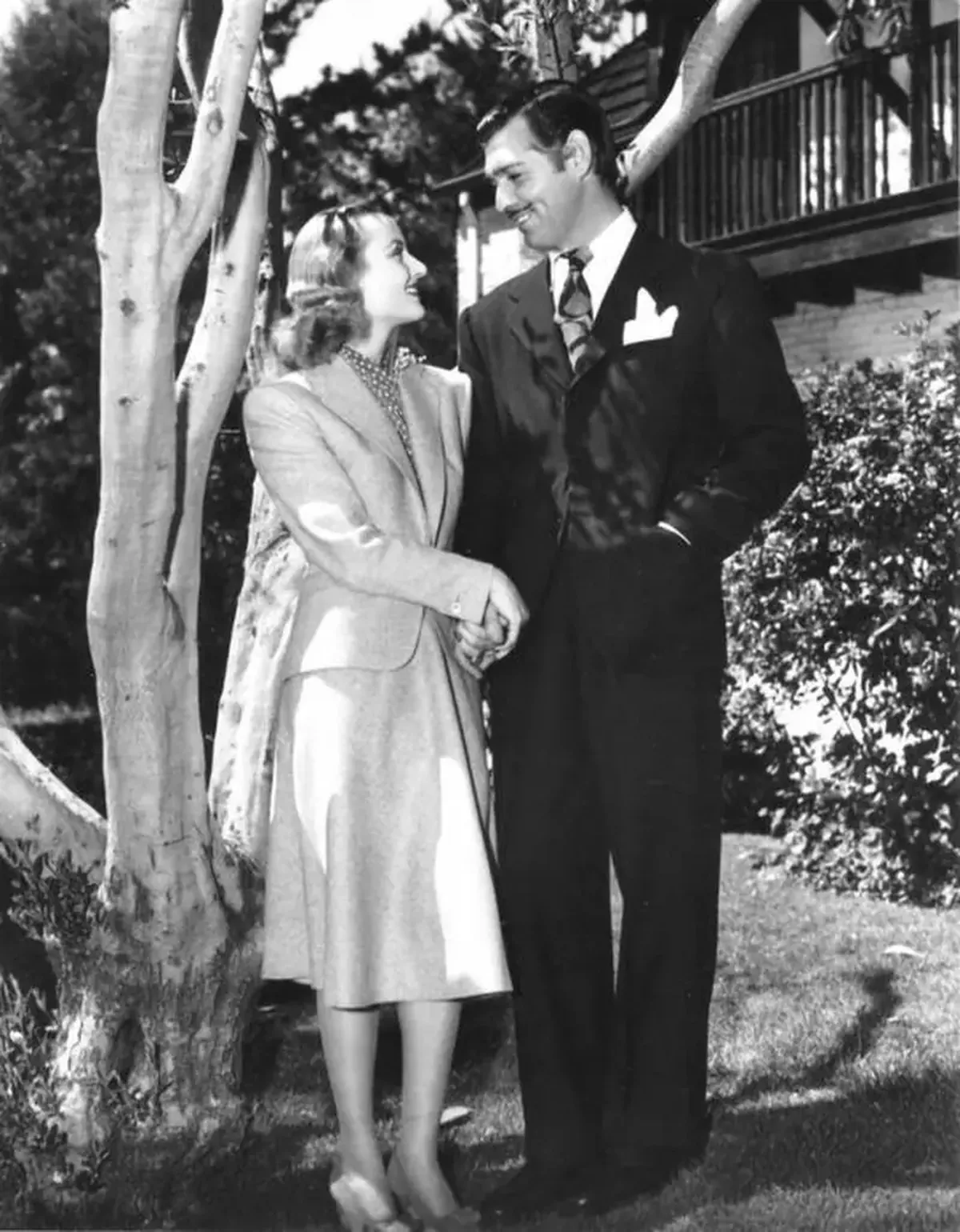
Carol Lombard and Clark Gable
They bonded over their love of jokes and pranks. The comedic actress was cheerful and easy to talk to. To register their marriage, the couple borrowed someone else’s car and drove away from Hollywood. For the clerk at the civil registry office in a small Arizona town, the appearance of the stars was a complete surprise: in her excitement, the woman smeared the document with ink. The newlyweds settled on a farm near Los Angeles, where Ma and Pa raised horses, kept cows, and tended to poultry. Gable rode around the property on a mule, while Carol, under the supervision of the farm manager, took care of the birds and harvested the crops.
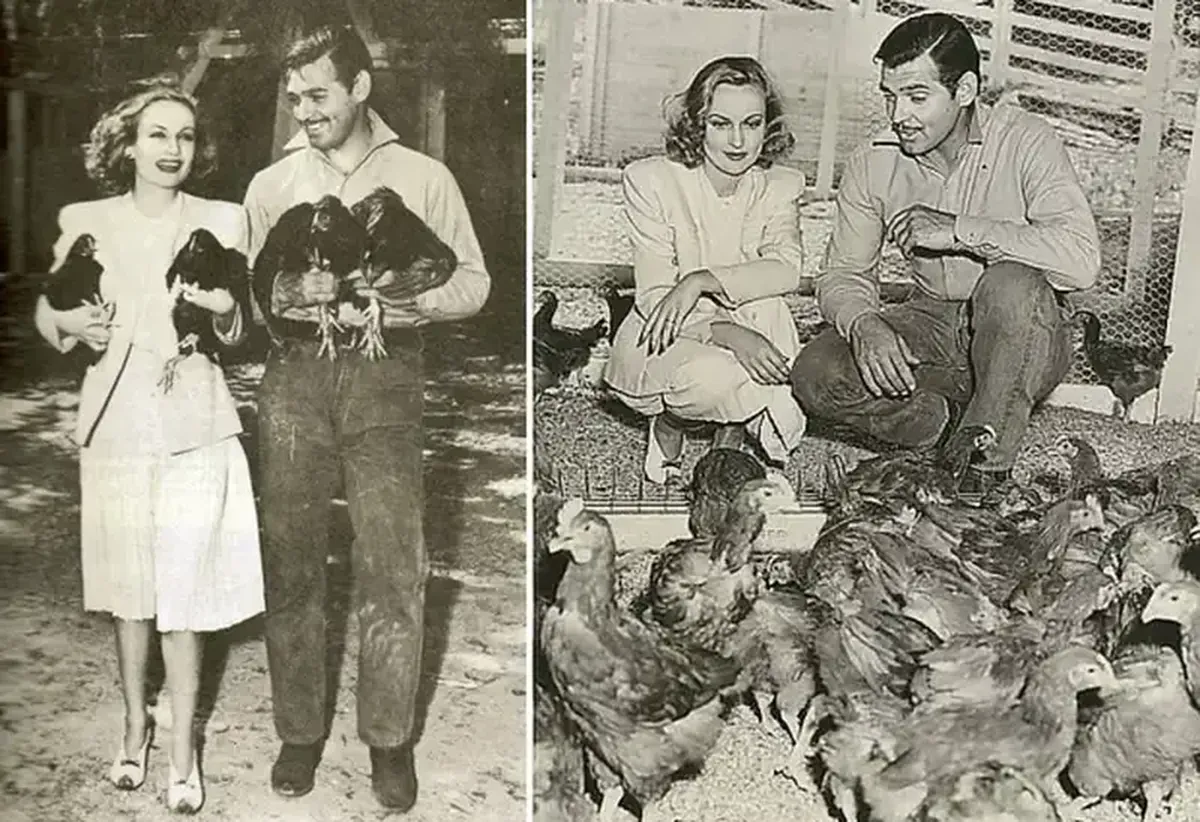
Worse Than War
But the couple’s happiness was short-lived. In 1942, Carol Lombard visited her home state of Indiana, where she was raising funds for military needs by promoting government bonds. The plane carrying Gable’s wife, her mother, and her press agent crashed in the Nevada mountains due to pilot error. All passengers and crew perished. The widower participated in the search for bodies alongside rescuers.
Afterward, Clark Gable served in the army. Despite the fact that at the time of his country’s entry into World War II he was no longer eligible for conscription, he enlisted in the United States Army Air Forces, driven by a desire to fill the psychological void and drown out his personal grief.
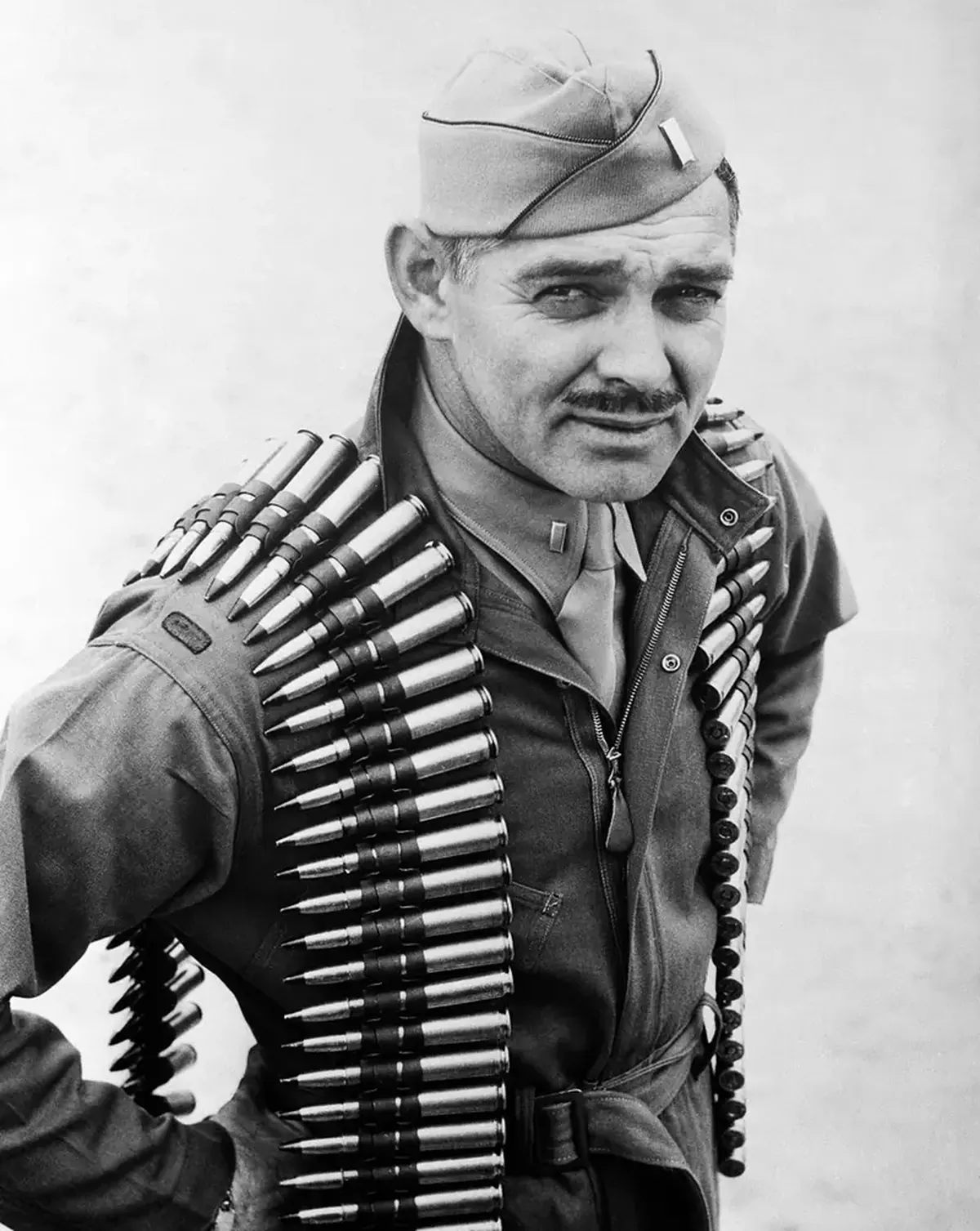
The popular actor was assigned to the First Motion Picture Unit—a division that filmed propaganda and training films for the American Armed Forces. In 1943, the star was sent to an active air squadron to shoot documentary films about air gunners. Equipped with a camera, Clark was to film the work of fire controllers on military bombers. The Hollywood star completed 25 combat missions, working for two years as an air operator and bombardier in Europe. Upon learning of his participation in the war, Hitler promised a substantial reward for the “trophy” to anyone who captured him.
Rushed to Live
During a combat mission, Gable’s plane was attacked by fighter planes, resulting in the stabilizer being blown off and one of the engines being disabled. The entire crew was injured during the second attack: one was killed, and two were wounded. Gable narrowly escaped being hit by anti-aircraft artillery—a bullet pierced his boot and nearly struck his head. In June 1944, the documents for Clark Gable’s discharge from the army were signed by Captain Ronald Reagan—the future President of the United States. Major Gable returned from the war with medals and a commendation cross, and his combat footage was shown in theaters. His military experience added weight to the actor in the eyes of viewers: Gable would have been “torn to pieces for souvenirs” had fans not known that the star did not give autographs.
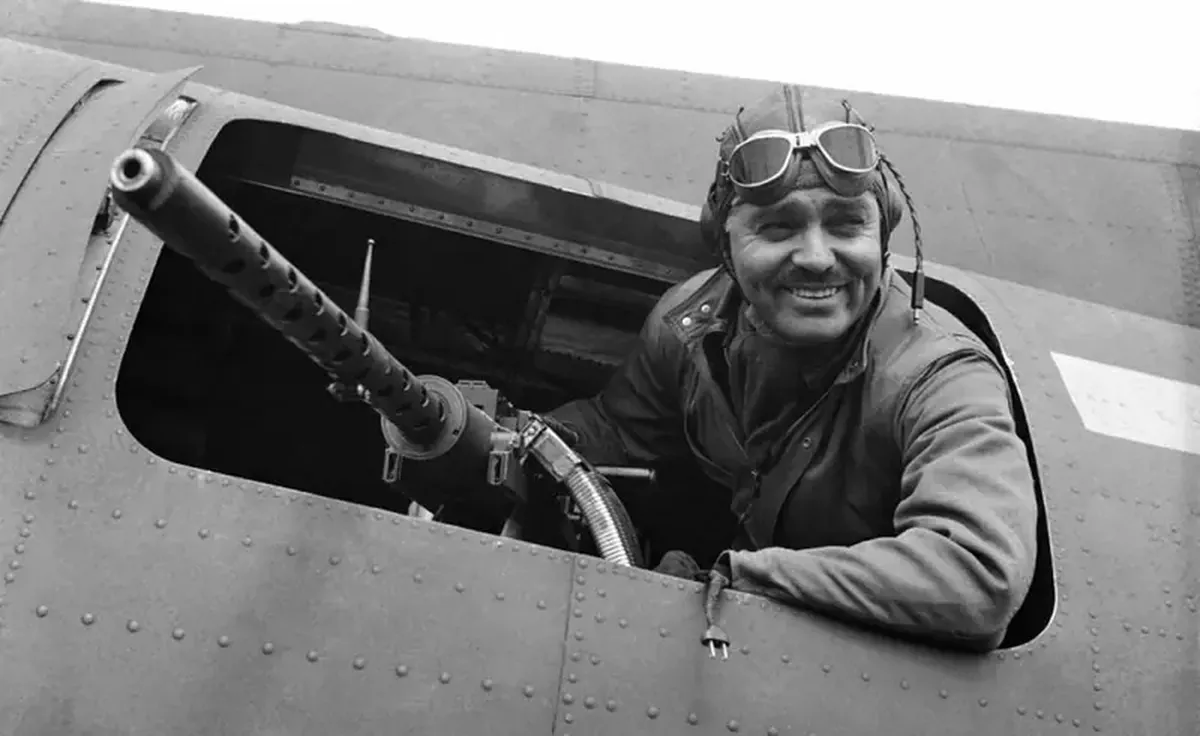
Gable managed to marry twice more, choosing women similar to his love, Carol. His marriage to one of them, Gable admitted, was a mistake: he divorced British model and actress Sylvia Ashley after three years. In 1955, he married his longtime friend Kay Williams, whose previous husband was the heir of an American “sugar magnate.” Gable was always fond of the adopted children from both of his wives, and Kay could have given him a child of his own. However, his last wife lost her first pregnancy with Clark, and the actor did not live to experience the joy of fatherhood, passing away before the birth of his heir.
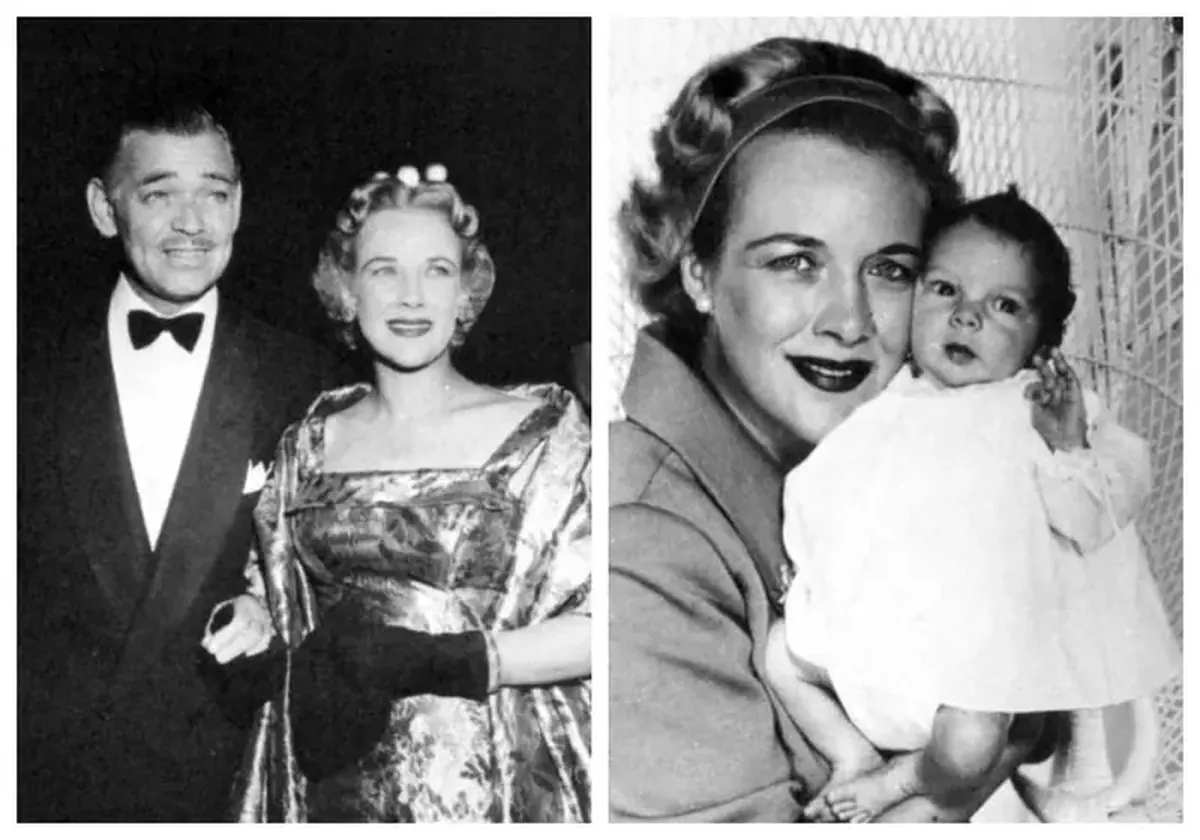
Clark Gable and Kay Williams
A Heart of Gold
After the war, Clark continued to act in films, appearing alongside Grace Kelly (“Mogambo”), Sophia Loren (“It Started in Naples”), and Marilyn Monroe (“The Misfits”). His collaboration with Marilyn Monroe became the last for both star actors. The harsh filming conditions prematurely led to the death of the 59-year-old Gable. The film, based on a script by Arthur Miller (Monroe’s husband), was shot in the scorching desert, and the actor’s partner delayed her appearance on set, nervously dealing with her divorce from the writer. The actor, suffering from coronary thrombosis, had to ride a mustang in the heat without a stunt double (which ultimately led to Clark Gable’s death), and then patiently wait for Monroe to emerge from her trailer for their joint scenes. Yet he still found the strength to encourage the actress like a father during this challenging time in her life.
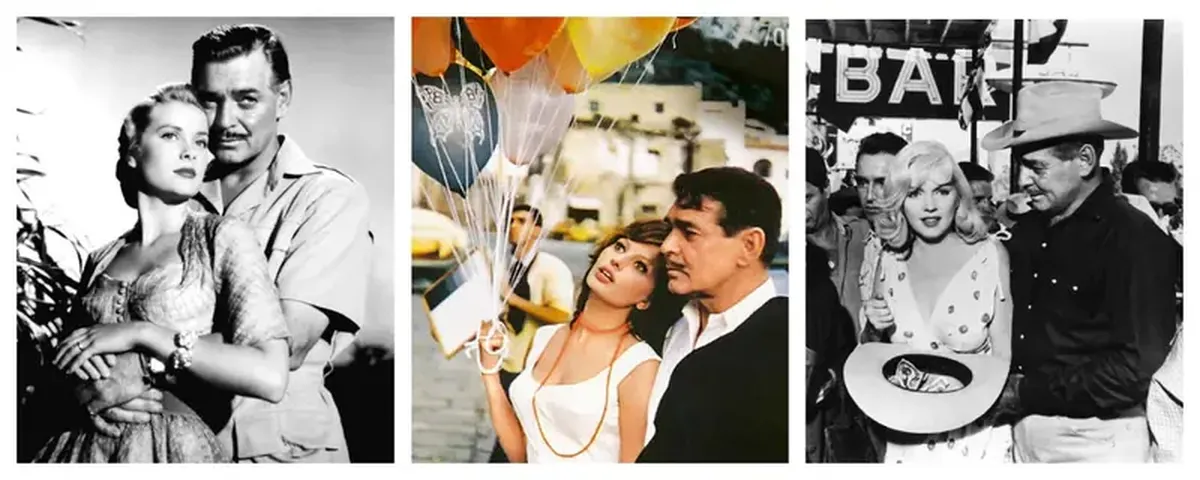
Clark Gable with Grace Kelly (“Mogambo”), Sophia Loren (“It Started in Naples”), and Marilyn Monroe (“The Misfits”)
“Clark had a heart of gold; he couldn’t get angry or hate, and his behavior never contained a hint of resentment,” said Arthur Miller, who had a rare gift. The cause of Clark Gable’s death was the aftermath of a heart attack and two heart attacks he suffered in his final days. On November 16, 1960, the 59-year-old actor passed away at the Hollywood Medical Center in Los Angeles, where his son John Clark Gable was born four months later. Gable’s last film was released posthumously in 1961. Fortunately, the actor managed to see working footage of the psychological western, where he poured his soul into the character of an aging cowboy, which he considered “his best work and the only role he truly played.”
